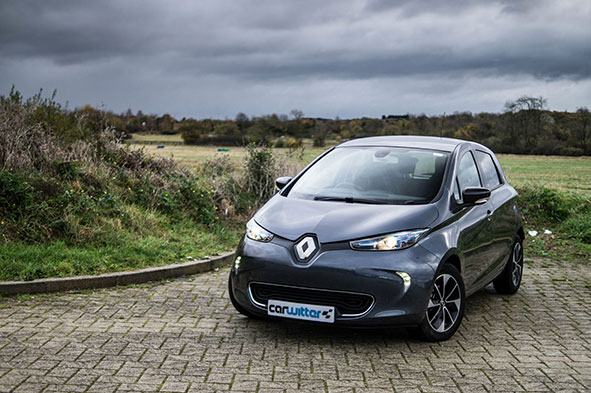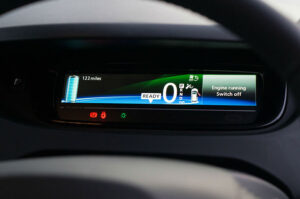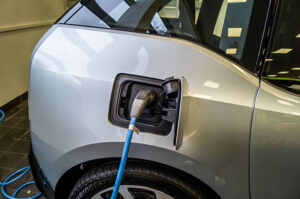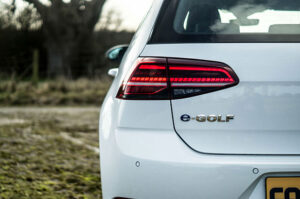Switching to Electric? Adam Tudor-Lane makes the case for electric vehicles.
Posted 15th June 2021
At the end of 2020, there were roughly 150,000 pure electric vehicles on our roads; the total number of cars in the UK stands at 32 million. Granted, electric vehicles won’t be for everyone; in fact, they’d probably suit 90% of car owners.
The National Travel Survey from 2019 shows the average trip length is 8.4 miles. Round that up to 10, and you have a 20-mile round trip. 42% of journeys were defined as ‘Medium Length Trips’ in another study, these varied from 5 – 25 miles. Take that upper figure and double it, 50 miles.
What about commuting? Well, the average commuter trip across England and Wales is roughly 10 miles. Put all those figures together, and the average motorist needs a vehicle that can take them between 20 and 50 miles.
And this is where switching to an EV could save you a small fortune. Now before you start wailing about their high initial purchase price, forget new cars. Used EV’s are becoming far, far cheaper to buy these days. There’s little to no yearly servicing required, and some batteries have a proven track record to still have more than 80% of their original capacity at upwards of 200,000 miles.
Internal Combustion vs Electric
 With a petrol cost of 126.6p per litre, and a car that achieves 37.7 MPG, each mile driven costs 15.3p. If an EV manages 4 miles per kWh and your electricity rate at home is 15.5p/kWh, your pence per mile travelled drops to 3.9. This means every journey driven will cost you a quarter of what it would in a petrol car.
With a petrol cost of 126.6p per litre, and a car that achieves 37.7 MPG, each mile driven costs 15.3p. If an EV manages 4 miles per kWh and your electricity rate at home is 15.5p/kWh, your pence per mile travelled drops to 3.9. This means every journey driven will cost you a quarter of what it would in a petrol car.
Those figures are the best case in terms of MPG for the petrol car around town and worst case for the EV. Most EV’s should be capable of at least 4 miles per kWh.
Why would you not want to shave three-quarters off your transport costs? But wait, there’s more. Did you know that Milton Keynes Council allow low and no emission vehicles to park for free in the purple spaces around the city centre?
Longer journeys
 Once in a while, you need to make a longer journey, 100+ miles. These will require a slight amount of thought; the charging network out in the wild can be patchy at best. Broken chargers that are poorly maintained are a total pain, so is having a plethora of apps on your phone, one for each charging company.
Once in a while, you need to make a longer journey, 100+ miles. These will require a slight amount of thought; the charging network out in the wild can be patchy at best. Broken chargers that are poorly maintained are a total pain, so is having a plethora of apps on your phone, one for each charging company.
But pick a decent, easy to use network like Instavolt or Shell, and you shouldn’t have an issue – you will, however, pay roughly double what it costs to charge at home for the privilege.
The vast majority of used EV’s can rapid charge; you want one that can ideally juice up at 50kW via CCS. That should enable most used EV’s to go from 20-80% in 30 minutes; on a long journey, what’s a 30-minute rest stop in the grand scheme of things?
What cars should you look for?
 Ideally, aim for a car that has a 100 mile range. This should give you enough mileage to not worry; you’ll likely need to charge just once a week at home.
Ideally, aim for a car that has a 100 mile range. This should give you enough mileage to not worry; you’ll likely need to charge just once a week at home.
That means you should look at something with upwards or around a 30kWh battery, which narrows the field down to the Renault Zoe R110 or ZE40, Nissan Leaf 2017+, Hyundai Ioniq, Kia Soul, VW e-Golf (make sure it has a heat pump optioned) or a BMW i3.
The majority of those can be had for £14,000 or less and are roughly four years old.
How do I charge it?
With any EV car purchase, new or old, you get a grant from the Government to have a home charger installed, perfect if you have off-street parking.
For those without private parking, granted, it’s a lot trickier. The options are to either juice up at work if you have the ability or leave it plugged in at a charger while out and about, maybe during the weekly shop?
There are numerous ideas in development around lamp post and pole chargers for on-street parking, but for now, the options are seriously limited.
The arguments against EV’s are diminishing by the day. Look at your actual car usage for a month; I bet the majority reading this could make the switch to electric with ease. All while saving yourself a pretty penny in the process.
